Manuscripts Etc.
| CLOSE WINDOW |

|
The following items are drawn from the William Faulkner Foundation Collection at the University of Virginia's Albert and Shirley Small Special Collections Library (http://small.library.virginia.edu/). |
|
"The Old People" was revised in two major ways between the first version we have of it, a 17-page typescript, and the version most readers are familiar with, the chapter in Go Down, Moses (1942). In both the typescript (probably prepared in late spring, 1939) and the story's first publication, in Harper's monthly magazine (September 1940), it is a first-person narrative. And according to the typescript, the first person he cast in the role of the 12-year-old boy who learns from Sam Fathers about the values of the "old people" and the moral code of the wilderness was almost certainly Quentin Compson. The narrator is not specifically named, but the man he calls "father" is, and on page 6 below you'll see that his name is "Mr. Compson." Quentin served as the narrator of "A Justice" (1931), which also features Sam and the family "farm four miles from Jefferson" (see page 3 below). Sometime between this typescript and the magazine publication, the two words "Mr. Compson" were cut, making the narrator effectively anonymous. Faulkner also expanded the passages on pages 3-4 below about Doom and Boon Hogganbeck. Revising the magazine version for the novel, Faulkner shifted the narrative perspective to third-person. At the same time, the 12-year-old boy becomes Ike McCaslin; the character who was the narrator's "father" becomes Ike's cousin, Roth Edmonds; and Jimbo, one of the two black servants along on the hunt, is rechristened Tennie's Jim. With these changes Faulkner ties the story into the larger history of the new bi-racial family he created for the novel, the McCaslin-Edmonds-Beauchamp family. 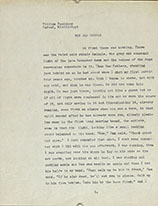 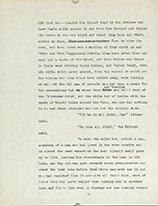  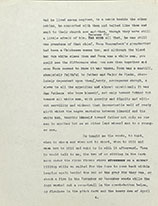 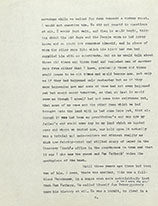 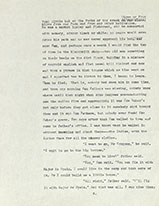  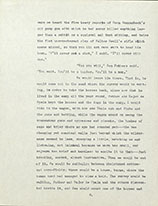  As in the other short stories narrated by Quentin - "That Evening Sun" and "Lion" as well as "A Justice" - it is hard to reconcile his role in the original "Old People" with the character readers meet in The Sound and the Fury and Absalom, Absalom! For example, on page 2 of the typescript the narrator talks about the way he will "grow up to live" in the same manner as his grandfather, "leaving his descendants in the land in his turn" - if Faulkner is being ironic at the expense of the anguished adolescent who will commit suicide at age 19, there is no hint of it in the typescript. And "Mr. Compson" here is very different from the cynical, not to say nihilistic alcoholic of the novels, as you can see for yourself on the last page of the story (below), where he provides his son with a kind of newer testament, based on his own experience in the woods with Sam. 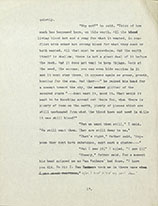 Citing this source:
|
